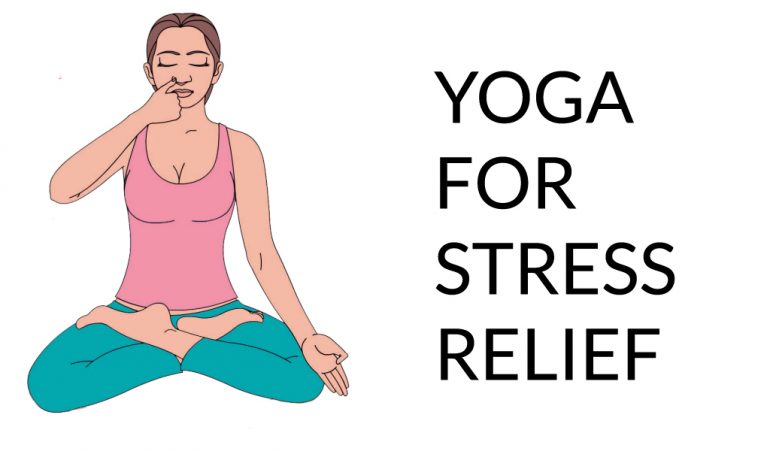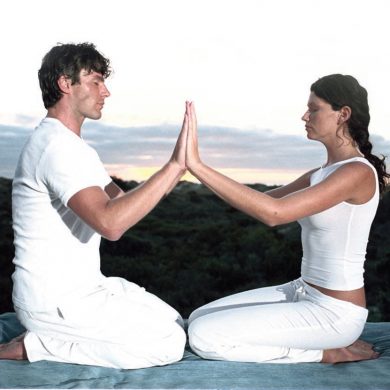Stress affects virtually everyone, from schoolchildren to adults. Stress is omnipresent in the world today, penetrating deep into the psyche and leaving a person with muscular, nervous, digestive, glandular, respiratory, cardiovascular and even blood circulation disorders.
It’s time to say goodbye to stress. You can eliminate stress completely from your life by learning a few simple yoga techniques and incorporating dietary modifications. Yoga can rejuvenate you and bring harmony back into your life.
Yoga
Yoga postures do a balancing act on the different systems of the body by slowing down mental activity, gently stretching the body and massaging the internal organs. By practicing yoga on a regular basis, you can build up a natural response to stress and be in a more relaxed state in your daily life.
Benefits of Yoga for physical stress
- Strengthens and tones muscles and improves flexibility and joint mobility
- Reduces cholesterol and blood sugar levels.
- Increases stamina and strengthens the body’s immunity.
- Increases vitality and improves brain function.
- Improves digestion and elimination.
- Improves blood circulation.
Benefits of Yoga for mental stress
- Increases sensory awareness.
- Improves concentration levels.
- Relaxes the mind by clearing the thought process.
- Helps in focusing attention.
- Frees the spirit.
Yoga therapy for stress
Firstly, you have to make up your mind to get rid of stress. Think positive. Secondly, follow this schedule wisely for thirty days, because it takes at least thirty repetitions for anything to become a habit.
Tadasana (Mountain Pose)
- Stand with the feet together, body weight equally distributed on both legs and fingers interlocked in front of your chest with palms towards the ground.
- Pull your arms forward while inhaling through the nostrils, turning your palms to the front and then lifting overhead with palms facing the sky.
- Hold the inhaled position as long as you can with complete body stretched upwards.
- Feel your ankles, calves, knee joints, thighs, pelvis, buttocks, trunk, chest, shoulders and arms perfectly stretched and pulled upwards.
- Balance yourself on the toes.
- Lower the heels and bring the hands beside your thighs while exhaling gently.
- Relax perfectly with feet shoulder wide apart.
- Repeat the above-mentioned steps 5 to 10 times.
Simhasana (Lion Pose)
- Sit on your yoga mat in a kneeling position with your toes put together and heels wide apart; and knees about two feet apart.
- Lean a little forward with the lower back arched slightly, chest lifted up and with maximum stretch on front side of the neck.
- Place the palms on the floor between your knees with fingers pointing towards the body.
- Keep your arms perfectly straight and rest the body on straight arms.
- Focus your eyes at the eyebrow center (in yoga called Shambhavi mudra).
- Inhale deeply and open your mouth wide, allowing the tongue to extend to the maximum extent towards the chin.
- Now produce a clear and steady roar (Singh Garjana) of the lion from the throat, keeping the mouth wide open.
- Close your mouth and inhale with the nose again.
- Repeat the above-mentioned steps five times.
Nadi Shodhan Pranayama (Alternate Nostril Breathing)
Preparation
Sit in any comfortable cross-legged position with the backbone straight. Control the flow of breath with the thumb and ring finger of the right hand by alternately pressing on the nostrils. Index, middle and little finger will remain relaxed and comfortably folded while performing Pranayama.
Step 1: Popularly known as Anulom Vilom
Close the right nostril with the right thumb. Inhale through the left nostril with complete awareness. Now close the left nostril with the right ring finger; remove the thumb from the right nostril and exhale through it. Similarly repeat the process by inhaling through the right nostril and exhaling through the left. This completes one round. Repeat the procedure for 10 to 15 times. Make sure that there is no sound of air passing while performing this Pranayama. Avoid forced breathing or rapid counts.
Step 2: Kumbhak
Now add retention or Kumbhak to the Pranayama pratice. We introduce Antar Kumbhak, or internal breath retention. In this step, closing the right nostril inhale very slowly through the left one. Now close both nostrils and retain the air in the lungs for some duration. Exhale smoothly through the right nostril. As soon as you complete this exhalation, inhale immediately through the right nostril keeping the left nostril closed. Retain this breath for the same duration and exhale through the left. The most important thing in this Pranayama is the ratio during Inhalation (Poorak), Retention (Kumbhak), and Exhalation (Rechak). As you gain perfect control over the time ratio: One Inhalation: One Retention: One Exhalation, increase slowly till you reach 1:4:2.
Cautionary Note: Asthma and heart patients should avoid breath retention in any yoga practice.
Meditation
Meditation awakens all the energy points lying dormant in the body and helps focus them on a chosen point, which can be anything that evokes comfort. In meditation, it is called the “divine percept.” Meditation helps you build natural resistance to stressors.
- Sit in a cross-legged position with your back straight and eyes closed. In case you have a problem sitting crosslegged on the floor or mat, you can sit straight in a chair or you can practice by lying down on your back.
- Concentrate on whatever you see with closed eyes.
- Let every thought, picture, color, person etc. come and go. Don’t indulge yourself in any of the objects of your thoughts.
- Try this for 15 to 20 minutes.
- Now think of your divine percept and surrender yourself to Him with the thought that from this moment all your problems are His and He is there to take care of everything. In yoga, it is called Ishwar Pranidhan.
These yoga and meditation techniques will become even more effective when practiced with dietary modifications.
Dietary modifications
- Avoid oily, fried and high-sodium foods. 2. Avoid tea, coffee, alcohol and chocolates. 3. Avoid onion and garlic in your diet on the days you feel depressed or stressed. 4. Add vegetable juice (carrot, spinach, beetroot, bitter gourd, cucumber, celery) and fresh fruit juice in your diet (no canned juices with added sugar, only natural fruit juices). 5. Stick to a vegetarian diet as far as possible.







